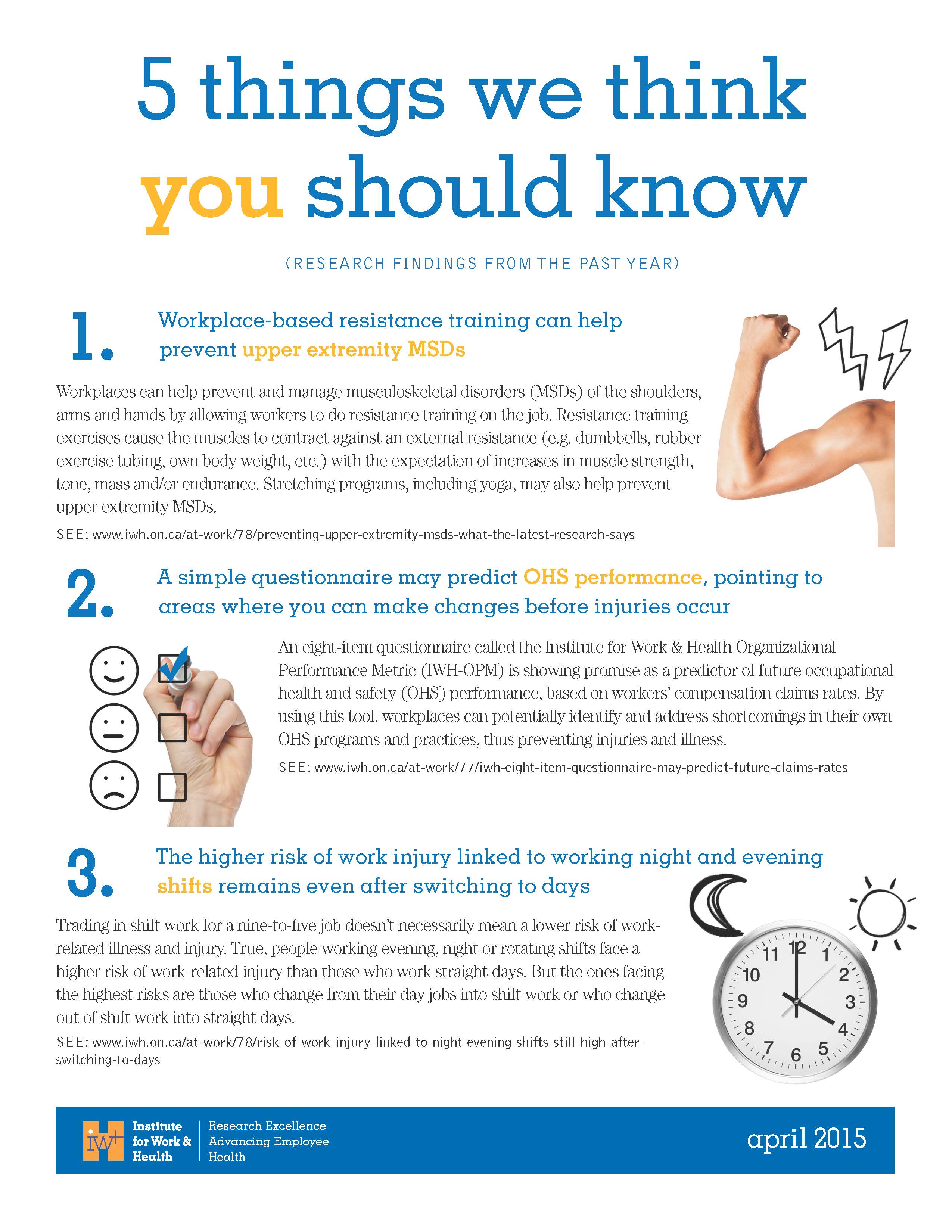
Workplace-based resistance training can help prevent upper extremity MSDs
Workplaces can help prevent and manage musculoskeletal disorders (MSDs) of the shoulders, arms and hands by allowing workers to do resistance training on the job. Resistance training exercises cause the muscles to contract against an external resistance (e.g. dumbbells, rubber exercise tubing, own body weight, etc.) with the expectation of increases in muscle strength, tone, mass and/or endurance. Stretching programs, including yoga, may also help prevent upper extremity MSDs.

A simple questionnaire may predict OHS performance, pointing to areas where you can make changes before injuries occur
An eight-item questionnaire called the Institute for Work & Health Organizational Performance Metric (IWH-OPM) is showing promise as a predictor of future occupational health and safety (OHS) performance, based on workers’ compensation claims rates. By using this tool, workplaces can potentially identify and address shortcomings in their own OHS programs and practices, thus preventing injuries and illness.

The higher risk of work injury linked to working night and evening shifts remains even after switching to days
Trading in shift work for a nine-to-five job doesn’t necessarily mean a lower risk of work-related illness and injury. True, people working evening, night or rotating shifts face a higher risk of work-related injury than those who work straight days. But the ones facing the highest risks are those who change from their day jobs into shift work or who change out of shift work into straight days.

Worker vulnerability to job-related injury is determined by more than who they are (e.g. young, newcomer)
The current use of the term “vulnerable workers” brings to mind certain types of workers (e.g. young, recent immigrants) or those doing particular types of work (e.g. in small business, temporary). But vulnerability is determined by more than this. It arises when workers are exposed to hazards in combination with inadequate workplace policies and procedures and/or low OHS awareness and/or a workplace culture that discourages worker participation in injury prevention.

Responding to employee concerns about safety plays a key role in turning around a poor OHS record
Learning about the health and safety concerns of employees and then quickly responding to them plays an important part in turning around a workplace’s poor health and safety record. The process creates a virtuous cycle of workers speaking up more and expecting more on OHS issues, becoming a “catalyst” for further participatory change.
